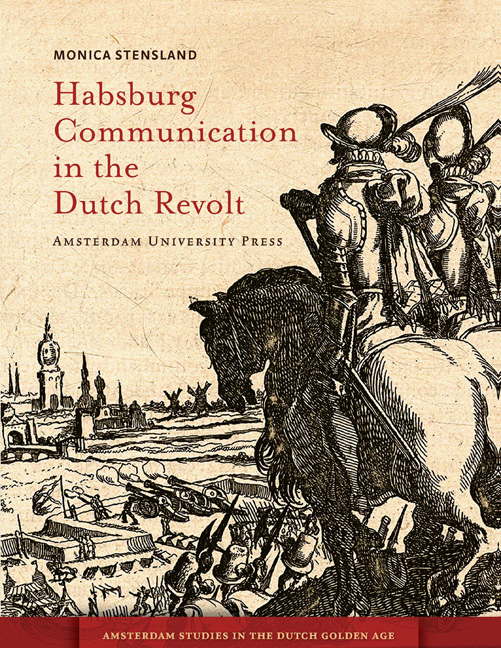Book contents
- Frontmatter
- Dedication
- Contents
- Acknowledgements
- List of Abbreviations
- Notes on References and Translations
- Introduction
- Rooting out Heresy and Rebellion, 1567-1572
- From Rebellion to War, 1572-1576
- The Breakdown of Royal Authority, 1576-1578
- Communicating Reconciliation, 1578-1585
- Losing the Peace, 1585-1595
- A New Beginning, 1596-1609
- Conclusion
- Notes
- Bibliography
- Illustration Credits
- Index
Losing the Peace, 1585-1595
Published online by Cambridge University Press: 27 January 2021
- Frontmatter
- Dedication
- Contents
- Acknowledgements
- List of Abbreviations
- Notes on References and Translations
- Introduction
- Rooting out Heresy and Rebellion, 1567-1572
- From Rebellion to War, 1572-1576
- The Breakdown of Royal Authority, 1576-1578
- Communicating Reconciliation, 1578-1585
- Losing the Peace, 1585-1595
- A New Beginning, 1596-1609
- Conclusion
- Notes
- Bibliography
- Illustration Credits
- Index
Summary
‘It is highly required and necessary that, from the moment of his arrival, His Highness work hard to find all the good and firm remedies to all these evils and calamities which have almost ruined and overwhelmed them [these lands].’ Thus began privy councillor d’Assonleville's memo to the newly arrived Archduke Ernest, the new governor-general, in January 1594. The rest of the memo went on to describe a series of problems so severe that to find a solution seemed to require ‘more divine work than human’.
The situation was indeed worse than it had ever been before. The harvest of 1586 was the poorest of the entire century and the price of grain rose to new heights. Jan van den Vivere in Ghent reported that people were so hungry that they would go through other people's rubbish to see if they could find anything edible, and some would even eat fish entrails. Continued warfare and troop movements caused peasants to flee the countryside in large numbers, and agricultural production fell. Indeed, edicts allowing peasants to hunt wolves and wild boar suggest rural areas were reverting to a state of wilderness. In 1586, only between fifty and sixty percent of the land that had been cultivated north-east of Ghent in 1577 was still under cultivation, and during the course of the following decade the price level of agricultural land in the domain of Herzele, near Aalst, dropped by almost eighty percent compared to the 1570s. In fact, for the price of one single ox, it was now possible to buy between two and three hectares of agricultural land. Emigration from towns was also considerable, and it was not only because Calvinists left after the restoration of Catholicism and royal rule. The dramatic rise in grain prices and the collapse in trade meant that others were also forced to move in order to seek out better circumstances for their trade. The exodus of people took their toll on rent levels: in Ghent in 1585, they were only one sixth of what they had been prior to the reconciliation, and although rent levels recovered relatively quickly in both Ghent and Brussels, the pre-reconciliation levels in Bruges and Antwerp were not reached until 1606 and 1621, respectively.
- Type
- Chapter
- Information
- Habsburg Communication in the Dutch Revolt , pp. 115 - 132Publisher: Amsterdam University PressPrint publication year: 2012



